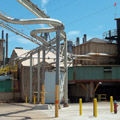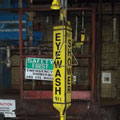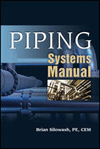
The people working at theCarus Corp. plants in LaSalle, Ill., deal with caustic materials on a frequent basis. The plants, which employ 120 people, produce water-treatment chemicals.
Potassium hydroxide, sulfuric acid and hydrochloric acid are a few of the heavy-hitting combinations present in the plants on a daily basis.
“The potential for exposure is there,” Carus Corp. Safety ManagerChris Backosstates.
When dealing with potentially hazardous materials, proper safety measures must be in place. Carus has made sure the highest safety levels are prevalent in its plant by replacing its existing emergency shower and eyewash system.
“The plant has been here since 1915 and a lot of those showers were put in during the 1960s,” Backos says. “We were getting different pressures. Some were too high or too low. You have to be able to hit the pressures needed for adequate flushing. It came down to reliability.”
Not only did Carus install new Bradley shower and eyewash stations, but it also installed a unique pumping system to go with it. Throughout the two plants, 110 new eyewash stations along with 43 new emergency showers were installed.
“We installed a tepid water system that hooks together,” Backos says. “It was a major project.”

“With the city system, that water is 55° F. If you stand under it, there is a concern for hypothermia,” Backos says. “Minerals in the water give us some problems from time to time. The minerals clog up the showerheads and the eyewash heads. You could get minerals in your eyes. With the soft water, there are no minerals.”
With the new tepid water system, a 2,000-gallon soft-water storage tank heats the water to 80° F via a recirculation system. If the water temperature is too low, a Parker Boiler water heater turns on. If the temperature is too high, a drain valve opens to drain hot water from the water storage tank. Cold, soft water then refills the tank to maintain its level and lower its temperature.
Each day at 6 a.m., the drain valve in the tank opens for five minutes and the tank automatically refills with fresh, softened water.
Water from the phosphate water softener is supplied to the storage tank via a control valve. The soft-water fill is controlled by a pressure transmitter to maintain the level. Water is supplied to the safety showers by various pumps. The pumps are operated by an ABB variable-frequency drive to maintain pressure. One pump is always designated as the lead pump, while another is the lag. The lead-lag status of the pumps automatically switches each day at 6 a.m.
Water is continuously circulated through the system to keep it fresh and to maintain its temperature going from the storage tank to the pumps to the main headers and then to the safety showers and eyewash stations and then back to the storage tank. Each safety shower, eyewash station or main header has a bleed valve and flow meter to maintain circulation. Flow rate for each loop is set at 0.5 gpm.
“We’re keeping the water fresh,” says Backos, who lauds the collaborative effort between the Carus engineering department and Bradley on the project. “It’s between 60° to 100°-where it needs to be. Our setpoint is 80°. Before, we had to put in thermostatic mixing valves and then 20 water heaters and then run water to all of those locations. That takes up a lot of room. This doesn’t take up much room. This has worked out very well.”


